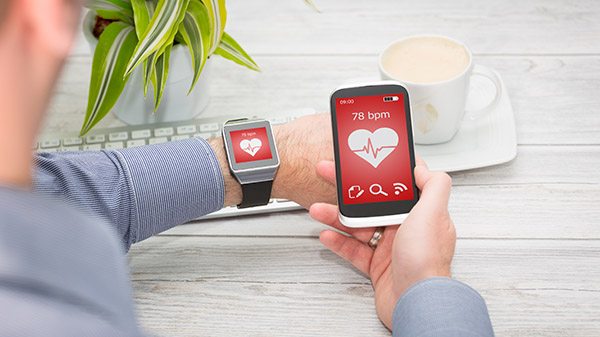
In the first series of this blog, I noted the the similarities between operating a cruise liner and running a large cardiovascular outcome trial (CVOT), which involves thousands of patients, hundreds of clinical sites, and a complex web of evolving data streams and eClinical technologies.

Now, let’s take a deeper look at three of the most significant emerging clinical technology trends that are driving change in the eClinical landscape and reshaping the future of CVOTs and other clinical trials.
Cardiovascular Outcome Trials Evolve Thanks to Ubiquitous Network Access, Wearables, and Big Data Technology
Science fiction frequently reflects and amplifies real-world technology trends – trends which are in reality far less glamorous but transformational nonetheless. In this case, we can see reflections of three significant clinical trial technology trends that have already resulted in fundamental changes to society and commerce and that are driving evolution in the eClinical landscape and in CVOTs.
Network Access is Becoming Ubiquitous
This always-on network access capability is transforming the entire clinical study process; for example, it facilitates:
- Streamlined and enhanced subject convenience through telemedicine and home care, reducing the need for outpatient visits and enabling remote oversight
- Improved patient retention by making patients easier to track, providing a more interactive experience and reducing the burden of study participation
- Expansion of the geographic reach of a clinical study to include patients and sites that might otherwise have been unreachable or impractical to include
Wearable Devices and Mobile Apps Are Transforming Patient Interactions
The growing adoption of wearable devices is transforming patient interactions in cardiovascular outcome trials. Wearables and apps frequently exist in a symbiotic relationship and offer the tantalizing prospect of an evolution in electronic data capture by:
- Extending the data capture ecosystem beyond the traditional clinic or hospital setting and into patients’ homes and workplaces
- Providing another layer of monitoring for subject adherence and compliance
Take, for example, the iOS app that provides an FDA-cleared EKG and lets subjects monitor their own blood pressure. Systems such as these can provide on-demand heart monitoring, including instant detection of atrial fibrillation and/or normal heart rhythm, and the ability to communicate results directly to the subject’s doctor.
Clinical Intelligence and Big Data
- The potential to leverage available patient data when designing a clinical study protocol and recruitment approach
- Collecting vast heart rate data sets from users of common wearables, such as Apple Watches, and using it as training data for neural networks for cardiovascular risk prediction
Rather than worrying about trying to predict the next big thing in clinical trial technology, there are huge advantages to be gained by leveraging emerging tools and technologies, including those already used successfully in other industries.
How to Implement Technology to Benefit Cardiovascular Outcome Trials
Given the complexities inherent in the eClinical systems landscape and the evolving nature of the technologies used in cardiovascular outcome trials, how should we approach implementing them in a way that ensures we provide the greatest benefits?
- Defining your eClinical architecture starts with organizational strategy identification. Once you have a strategy, you can assess how well your current systems, vendors, and processes support the key capabilities that are needed to deliver that strategy.
- A roadmap is then created to drive the selection of systems and vendors that best align with the organization’s clinical trial requirements and priorities.
- Close partnership should be forged with vendors – both parties stand to gain from this relationship: vendors gain insights from CROs, and CROs help to drive vendor product roadmaps, creating shared go-to-market opportunities.
- Working closely with vendors enables deep integrations to be built between eClinical systems with comprehensive, effective master data management. This enables the incorporation of structured data from traditional sources, such as EDC and CTMS; semi-structured data from for example, ClinicalTrials.gov; or even unstructured data from Twitter and Facebook into operational decision making.
- This integration in turn results in operational efficiencies, single data entry, and the rapid propagation of data across systems.
- The objective is to achieve transparency of data to everyone working on the clinical study; a single source of truth with real-time visibility into the data streams, resulting in the generation of actionable insights.
- Consistent and transparent data enables the implementation and tracking of comprehensive quality and performance metrics, which frees staff to focus therapeutically on the patient journey through the clinical trials and on the areas of greatest risk to study delivery.
It’s worth noting that this process is cyclical, rather than a one-off exercise to be pursued to a fixed conclusion. As the technology landscape shifts and evolves, a company’s eClinical roadmap should be revisited periodically to ensure it remains aligned with the company’s business strategy and that the strategic selection of vendors and systems continues to deliver efficiency and quality.
A properly implemented eClinical architecture permits clinical research staff to live “in the data stream,” spending more time not just monitoring data for integrity but also for meaningfulness and gaining insights into novel interventions on patient care – transforming data and information into knowledge about a cardiovascular outcome trial.
The end result is technology that exists to serve and empower CROs so they can highlight their clinical acumen – the technology itself becoming almost invisible – the CVOT seeming to glide effortlessly towards its final destination, much like the Queen Mary.
Partner with Our Cardiovascular Experts
For more information on Worldwide Clinical Trials’ expertise in cardiovascular clinical trials, read more about our global experience in CVOTs here.


